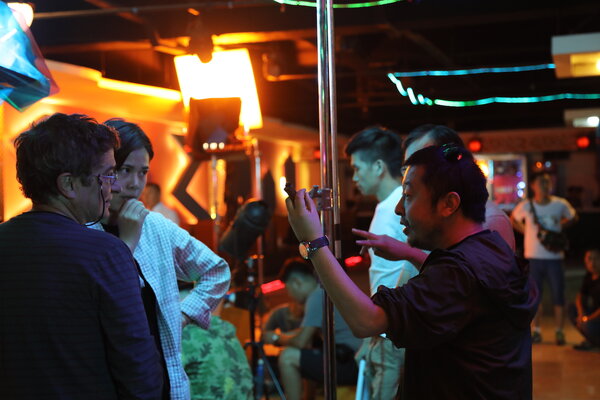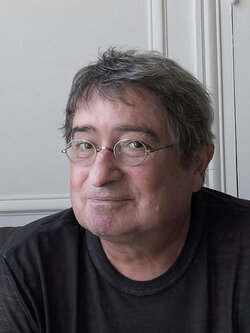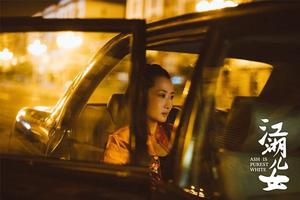Cinematographer Eric Gautier, AFC, discusses his work on Jia Zhang-ke’s film "Ash Is Purest White"
It is 2001, and young Qiao is in love with Bin, the head of Datong’s little underworld. When Bin is attacked by a rival gang, Qiao rushes to defend him and fires a few shots. She is then condemned to a five-year prison sentence.
When she is released, Qiao goes to find Bin and tries to reconnect with him. But he refuses to follow her. Ten years later, in Datong, Qiao is still single, and has achieved success by remaining faithful to the values of the underworld. Bin, used up by the trials and tribulations he has faced, returns to find Qiao, the only woman he has ever loved…
Starring Zhao Tao and Liao Fan.
This is the first time that Jia Zhangke is not working with his usual cinematographer, the one he has been working with from the very start of his career, Yu Lik-wai.
About fifteen years ago, I was invited to the Peking Cinematheque with Olivier Assayas for a retrospective on his work. I met students from two cinema schools there, including Jia and Lik-wai (who speaks French fluently, having studied at the INSAS) through Olivier. I again met Jia when he was a member of the jury at Cannes during the screening of one of Olivier Dahan’s films, Grace of Monaco. For rather unfortunate personal reasons, Yu Lik-wai was unable to work on Ash is Purest White. Together, they agreed to suggest my name to MK2, which was financing the project.

Shooting took place in three parts, in three regions, and in three different time periods.
We shot the first two parts, which take place retrospectively in 2001 and 2006, during the three summer months. Then we shot the third part, which takes place in 2017, during the winter.
The first part of the film takes place in northern China, in the city of Datong, in Shanxi Province, where Jia was born and where he shoots almost all his films. The closure of the coal mines in that region resulted in the workers’ being sent to the other end of China.
The second part is located in the centre of the country, in Hubei Province, where the Three Gorges Dam on the Yangtze River is located. The construction of that famous dam for the most powerful hydroelectric plant in the world resulted in the displacement of 1.5 million people and is the centrepiece of the film Still Life. Then, that part ends in the city of Dunhuang, in the Gobi Desert.
The third part, during the frigid winter, takes place once again in Datong, but ten years later…

The three periods were shot on different media.
At the beginning of the film, we’re in 2001, and Jia really wanted to tell a mafia story in homage to John Woo’s film The Killer and in reference to the Hong Kong films that he was fed on as a child. The world of the mafia is one he knows well, and there are “real” gang members in the dance scene set to the 1980s hit YMCA, all bare-chested to show off their crazy dragon tattoos.
Jia wanted to show images from that time that he’d filmed back then with Lik-way. So, we filmed the opening of the film in 1,33:1 format, and then in 1,85:1 format, in different definitions so that we could splice them together with the texture of those images. To accompany the stories that grow more powerful, we first shot in Mini DV, then in HD, then in 2K, to finally arrive at 4K in the kung-fu scene that ends the first part. The colours become stronger and more aggressive to remain faithful to that disco era.

When Qiao, played by Zhao Tao, is released from prison five years later, we’re at the Three Gorges Dam. The Chinese built that dam between 2006-2009 and caused the level of the water to rise so high that a number of towns and villages were submerged. In the film, archival footage shows the moment where the level of the water is half-way to its peak, and everything you see behind it is a town that is about to become a ghost town.
That main part was shot in 35mm. Our idea was to recreate something that would be visually calmer. This is the battle of a courageous woman, alone, in pursuit of justice. All she asks is to forgive the man she made a very heavy sacrifice to in the name of love.
Then, in 2017, it is Bin’s turn to come back to her, asking for forgiveness. He is weakened, and she has become transformed and stronger. We shot the last part of this film in digital 5-6K, it was highly contrasted, with less colour, and everything is colder.

About the choice of lenses for each part of the film – About the order of which media used
[Laughing] We began in DV, then HD, then 2K, then 4K, then 35mm, then underdeveloped 35mm, and ended in 5-6K.
As to our choice of lenses, I had to adapt what equipment was available : over 800 films were shot in China last year, and that’s not even counting the foreign productions !
The first part was shot using Master Primes, which aren’t my favourite lenses because they’re too sharp, but I knew that they would have advantages in low res, and I liked their excessive colour rendering. Then I used Cooke S4 lenses for the 2d part shot in 35mm. They’re prone to flaring, but in a natural way, and I like their roundness.
Then Leica Summilux lenses for the last part. Those lenses are pretty highly-contrasted and yet soft, and their colour rendering is realistic and neutral. I wanted the end to be dramatic. Dense atmospheres without deep blacks, and very bright highlights.

Shooting in China with an entirely Chinese crew
There are no days-off in China. We began preparing and shooting for 21 days non-stop. I was able to insist to get us a day-off from time to time and the Chinese team was actually delighted ! Even Jia liked it, it gave him a chance to watch the images, to rewrite scenes… And to have a rest…
The Chinese rarely speak English. So, it was the first and only time I travelled abroad with someone from my French team. I had the good fortune of meeting a wonderful assistant camerawoman on one of Xavier Giannoli’s films, Carine Bancel. I’d never brought someone along with me on a foreign project before, as my principle is that travelling means working with locals, sharing our knowledge, and mixing our cultures. But the language barrier was too high, and I needed to be able to pick up the camera at any time and be ready to work quickly, without using an interpreter.

The gaffer is a legend in China. He’s from Hong Kong, and he worked alongside Christopher Doyle on Wong Kar Wai’s first movies. He spoke enough English so that we could easily communicate with one another. It was a great pleasure to work with him, he had a loyal, pleasant, and very capable team. He was constantly engaging with the essential questions of cinema, he was always personally concerned by the scenes we were shooting. I don’t need to describe what a wonderful working relationship we had.
The key grip only spoke Mandarin. He was excellent, but we had to communicate using sign language ! He was a great cameraman with a real artistic sensibility. He moves the camera with his eyes on the actors, not on the ground marks.

The role of a cinematographer is to understand the film
The cinematographer must accompany the story and seek out what resonates and what is dissonant and find the right balance between an image that takes over from the movie and a dull and boring image. It’s a question of balance in every shot.
I’m always searching for how I can avoid betraying the director and how I can also enrich his movie. First of all, you’ve got to be a good listener, modest, and patient. Because it’s always the last-minute decisions, when my intuition is correct, that are the sincerest and the best.

About the rhythm and the resonances
Jia Zhang-ke is a director with a real sense of rhythm, like a musician.
He likes rhymes, and scenes that play off of one another. Trains, stairs… or the landscape with the volcano in the background when Bin teaches Qiao how to shoot a gun for the first time, and that we return to at the end of the movie when it’s she, this time, helping him to stand up from his wheelchair. There’s a real resonance between the two scenes. They tell the story of what it means to love, and they alone summarize the entire film.
 En
En Fr
Fr





